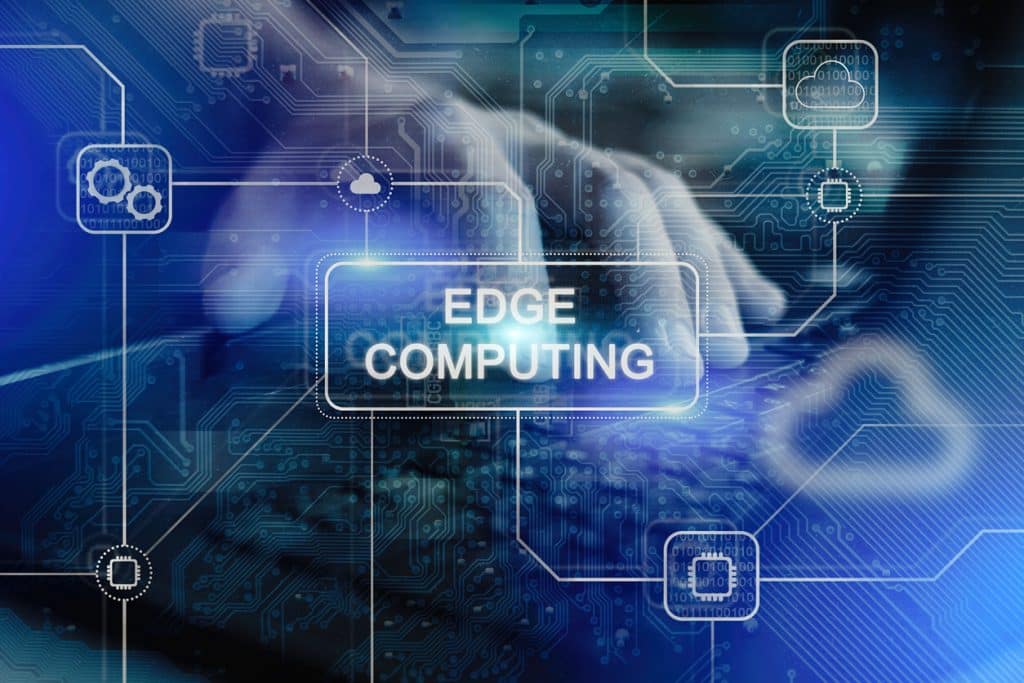According to the Worldwide Edge Spending Guide published by IDC, worldwide spending onedge computing equipment and services will reach $317 billion by 2026. And with good reason:edge computing looks set to revolutionize a wide range of sectors. The development of autonomous vehicles, industrial site management, augmented reality... the use cases are numerous. Let's take a closer look at this innovative technology.
Edge computing: what are we talking about?
Edge computing refers to an IT architecture that brings data processing closer to its source, rather than centralizing the process in remote datacenters. This technology can be deployed at various network locations, from regional datacenters to the base of 5G antennas. Unlike traditional models, edge computing enables data to be processed close to the devices that generate it. This is known as distributed architecture.
What's the difference between edge computing and cloud computing?
Cloud computing involves running workloads in decentralized environments (clouds), where resources are pooled. Cloud computing therefore focuses on grouping services in large datacenters, offering scalable and easily-shared resources, but with access dependent on Internet connectivity. In contrast, edge computing processes data at the edge of the network. So, unlike cloud computing, edge computing enables data to be processed locally, as close as possible to the source. The result is reduced latency and greater reliability. This makes edge computing a particularly suitable approach forIoT , for example, or for managing critical situations.
What's the link between edge computing and 5G?
The development of 5G is acting as a catalyst for the deployment of edge computing. Indeed, 5G technology offers very high data rates and latency times that can be reduced to one millisecond, a performance previously reserved for wired networks. The combination of 5G and edge computing technology paves the way for increasingly powerful data processing.
The goals of edge computing
Edge computing serves a triple purpose:
- Implement new uses for businesses and the general public: by enabling real-time processing of large volumes of data, edge computing can, for example, speed up video image analysis for businesses, which can help them optimize their production chain.
- Facilitate the deployment of new operated services: by reducing latency and optimizing processing times, edge computing enables the development of new uses, such as autonomous vehicles, or the deployment of private networks for Industry 4.0.
- Improving performance and quality of service: edge computing also improves the technical characteristics of networks, increasing resilience and reducing latency.
Edge computing: different use cases
Thanks to the real-time data processing it enables, edge computing can be used in a wide range of sectors, such as :
- Industry : today, more and more factories are integrating IoT technologies to avoid interruptions and improve production efficiency. To operate, these IoT sensors generate considerable data flows. Thanks to edge computing, this abundance of data can be processed close to the equipment - a much faster process than transmitting the data to a remote datacenter.
- Healthcare: the healthcare sector also generates a huge amount of data, from medical equipment, sensors and devices. Coupled with machine learning and automated data access, edge computing helps identify incidents that require instant intervention. Doctors are thus able to identify emergencies more quickly.
- Transportation: edge computing is also helping to drive the revolution in mobility. From better support for road users (hazard warnings, driving guides) to fully autonomous vehicles, this technology speeds up and secures the exchange of information.
What are the advantages of edge computing?
Edge computing offers many advantages for its users, whether they are individuals, businesses or operators.
Among them are :
- Increased speed: edge computing reduces data transmission times, minimizes downtime and cuts loading times. For users, this increase in speed means greater efficiency.
- Real-time decision-making: local data processing and analysis enable users to make almost instantaneous decisions.
- Enhanced security: because processing operations are carried out locally. Thanks to edge computing, the risk of exposure of sensitive data is reduced. This is particularly important for the IoT, where interconnected objects are particularly vulnerable to cyber threats. Edge computing makes it possible to reinforce the security of connected objects and avoid security breaches.
- Cost optimization : transmitting data between different sites generates costs, particularly in terms of bandwidth. This is where edge computing can help save money: costs are reduced because processing is carried out locally.
- Increased autonomy : ensuring data processing at local level guarantees operations in the event of a network incident.
Edge computing: how can you benefit?
However, edge computing does have one drawback: it entails a high level of complexity in terms of architecture and equipment. Deploying edge computing involves implementing, maintaining and upgrading a state-of-the-art IT infrastructure, requiring a certain amount of expertise. That's why it's often advisable to call on experts to implement such technology.
This is where TDF comes in. The end-to-end integrator designs, deploys and operates private 4G - 5G networks networks to ensure continuity, performance and security. To guarantee optimum service for its customers, TDF offers edge computing solutions solutions: datacenters and servers are installed directly on customer sites, enabling data to be localized and exploited nearby. The aim? Rely on this innovative technology for more reliable and efficient connectivity.
Want to find out more about edge computing technology or TDF's role? Contact us now!

